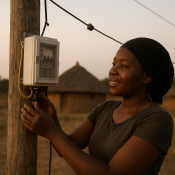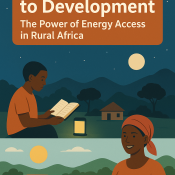
Understanding Power Subsidy in Nigeria
Subsidies are direct or indirect payments made by the government to businesses or individuals. Direct subsidies involve cash payments from the government to the recipient. With indirect subsidies, on the other hand, industries or households enjoy certain economic benefits from government policies such as tax breaks. Subsidies are typically given to remove some type of burden and are often considered to be in the overall interest of the public, given to promote a social good or an economic policy.
The key subsidies in Nigeria include exchange rate, agricultural, and fuel (Premium Motor Spirit or PMS). Multiple energy subsidies have also existed in the country, although these subsidies are being phased out. Until recently, Nigeria had an electricity subsidy that had been in effect since 2013 when the power sector was privatized. The electricity subsidy was removed in 2022 following a tariff review. Before its removal, electricity subsidies represented about 9 percent of the Federal government's non-oil revenues, according to the World Bank's Nigeria Public Finance Review.
Despite the benefits they might confer on private businesses and individuals, in most cases, subsidies can be costly for the government, leading to calls for their removal. This situation has been observed in Nigeria with energy subsidies, such as electricity and petrol subsidies (as they are considered staples in the nation’s economy and in some cases, have been considered strongly to be sources of livelihood for a significant portion of the country’s populace.)
. The Nigerian Economic Summit Group (NESG) also supports the call for subsidy removal through a gradual phasing-out approach.
Where the energy product is mostly nontraded (such as electricity in most countries), the relevant supply cost is the cost-recovery price for the domestic producer, including a normal return to capital and distribution costs. This approach to measuring consumer subsidies is often referred to as the “price-gap approach” (Koplow, 2009) and is used widely in analyses by other international agencies. In most economies, there are elements of both producer and consumer subsidies, although in practice it may be difficult to separate the two. The advantage of the price-gap approach is that it also helps capture consumer subsidies that are implicit, such as those provided by oil-exporting countries that supply petroleum products to their populations at prices below those prevailing in international markets.
Although energy subsidies do not always appear on the budget, they must ultimately be paid by someone. Whether and how subsidies are reflected in the budget will depend on who incurs them and how they are financed. For example, the cost of pretax consumer subsidies may be incurred by state-owned enterprises (SOEs) that sell electricity or petroleum products at a price below supply costs. If the government fully finances these losses with a transfer, the consumer subsidy will be reflected in the budget as expenditure and financed through higher taxes, increased debt, or higher inflation if the debt is monetized. In many instances, however, the subsidy may be financed by the SOE and reflected in its operating losses or lower profits, lower tax payments to the government, the accumulation of payment arrears to its suppliers, or a combination of all three.




